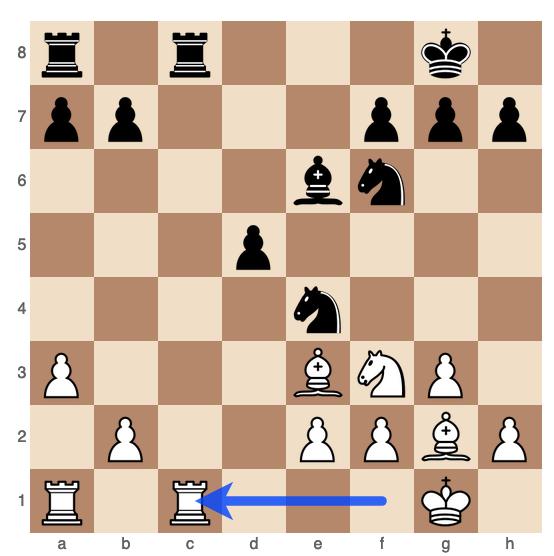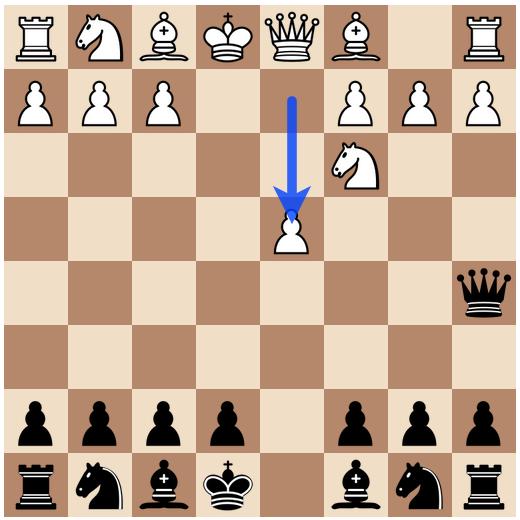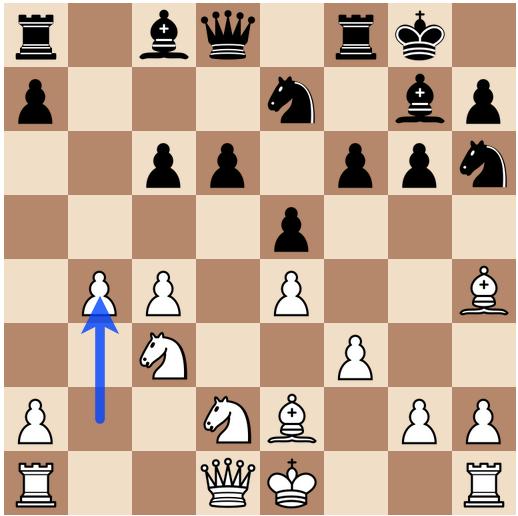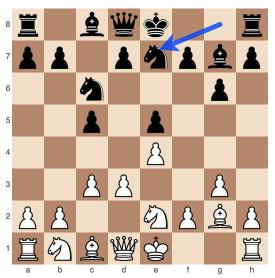In this first-round game from Titled Tuesday, Guillermo Baches (Chessllermo) faces K. Gulamirian in a complex encounter that quickly transitions into a tactical skirmish. Baches, playing with the white pieces, skillfully navigates through the complications of the opening to secure a decisive victory in just 27 moves. The game demonstrates Baches’ ability to capitalize on his opponent’s inaccuracies and convert them into a winning advantage.
The Opening
The game begins with the Three Knights Game (1. e4 e5 2. Nf3 Nc6 3. Nc3), a classical opening choice that leads to flexible and open positions. Gulamirian responds with 3…Nf6, transposing into a Four Knights Game setup. Baches introduces a slightly offbeat idea with 4. h3, a move that aims to avoid the standard lines and keep the opponent guessing.
Gulamirian develops naturally with 4…Bc5, and Baches immediately seizes the opportunity with 5. Nxe5, entering the aggressive Ponziani-Steinitz Gambit. After 5…Bxf2+, Gulamirian goes for a tactical line that leads to an early exchange of pieces, where both players must tread carefully.
After 6. Kxf2 Nxe5, Baches sacrifices the knight temporarily to gain time and create a dynamic pawn center. With 7. d4, he pushes forward, challenging Black’s knight on e5 and gaining central control. Gulamirian retreats the knight with 7…Ng6, aiming to regroup and hold onto the material advantage, but this move allows Baches to gain a tempo and further his development.
The Middlegame
The middlegame begins with 8. e5, a strong move that kicks the knight away and opens lines for White’s pieces to become active. After 8…Ng8, Black’s knight is forced back to its original square, and Baches quickly capitalizes on this with rapid development.
Baches’ move 10. Re1, followed by 11. Ne4, is a powerful setup that increases pressure on Black’s position, targeting the weak f6 square and eyeing potential kingside attacks. Gulamirian tries to alleviate the pressure with 11…O-O, but Baches is ready with 12. Nd6, placing the knight on a dominant outpost and targeting the weak e7 pawn.
The move 13. Qf3 highlights Baches’ attacking intentions, as he prepares to bring the queen into the fray. Gulamirian attempts to defend with 13…Nh8, but this move is too passive, and Baches takes full advantage. The critical moment arises after 15. Bxd5 Qxd5 16. Qxd5 cxd5, where Baches exchanges queens, simplifying the position but leaving Black with a compromised pawn structure and weak squares.
The Endgame
The endgame begins with Baches having a clear advantage due to his active pieces and better pawn structure. After 17. Be7 Ng6 18. Bxf8 Nxf8, Baches methodically increases his advantage by targeting Black’s weaknesses and activating his king.
Baches’ move 20. Rf1 is a key moment, as it not only defends the b-pawn but also prepares to invade on the f-file, putting further pressure on Black’s position. Gulamirian tries to create counterplay with 20…Ba6, but Baches calmly consolidates with 21. Rf7, doubling rooks on the f-file and maintaining control.
The final phase of the game sees Baches’ pawns marching forward, creating unstoppable threats. After 23. b5 Bc8 24. Raf1, Baches takes control of the open file and prepares to penetrate Black’s position. Gulamirian’s attempts to hold on with 25…a6 fail to stop White’s advance. The game concludes after 27. axb5, where Baches’ superior position and active pieces force Gulamirian to resign.
Conclusion
This game is a great demonstration of how to handle the Four Knights Game with aggressive intentions, quickly transitioning from the opening into a middlegame where White seizes the initiative. Baches’ ability to capitalize on his opponent’s passive play and convert his advantage into a winning endgame showcases his strategic understanding and tactical awareness.
Key Lessons:
- In the Four Knights Game, early deviations like 4. h3 can lead to complex and open positions, where both sides must be alert to tactical possibilities.
- Aggressive development and central control are crucial for seizing the initiative and putting pressure on the opponent.
- In the endgame, activating your pieces and pushing pawns with purpose can quickly turn a small advantage into a decisive victory.
“Chess is a game of initiative—once you have it, never let it slip away.” Baches exemplified this principle, maintaining pressure throughout the game and securing a convincing win.






